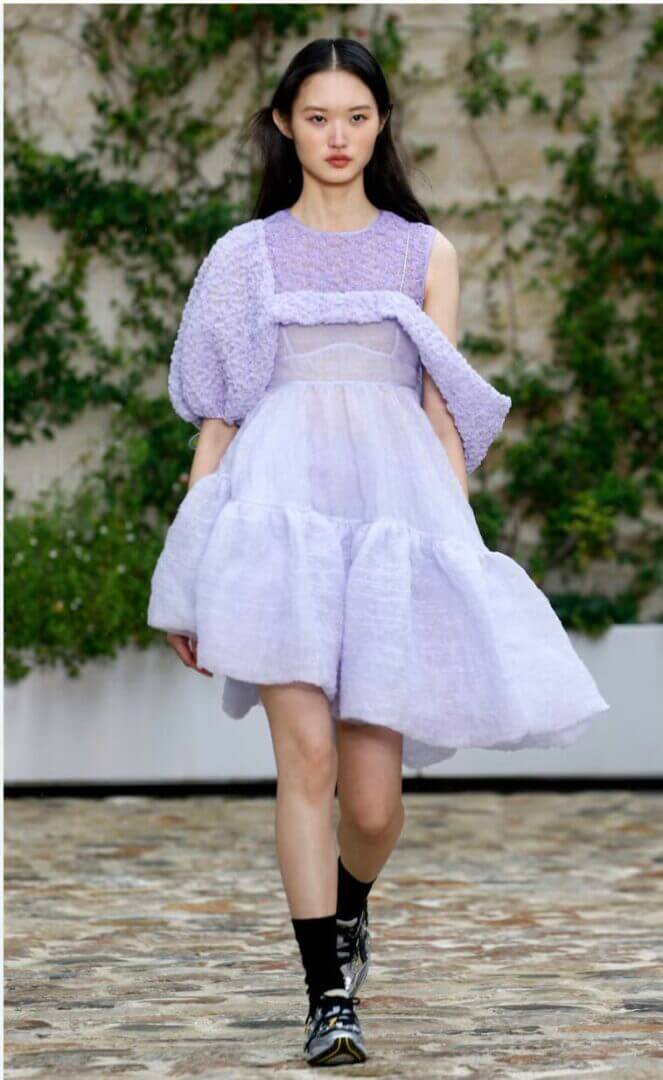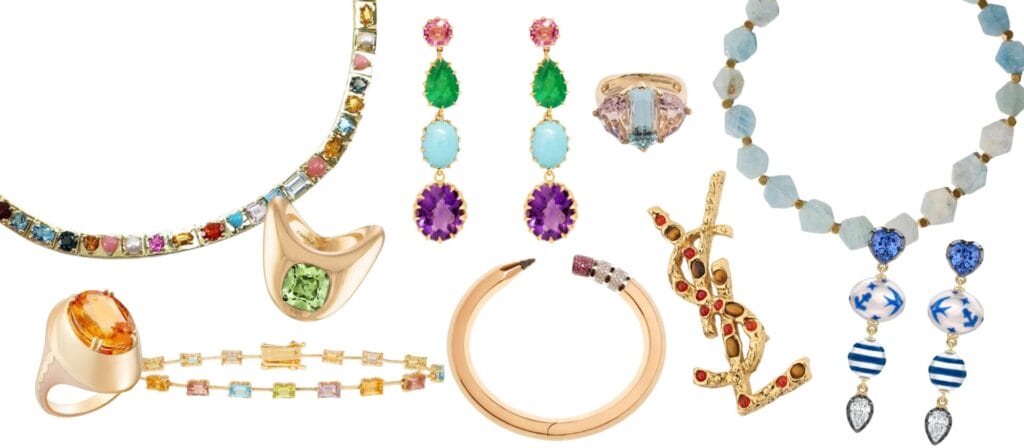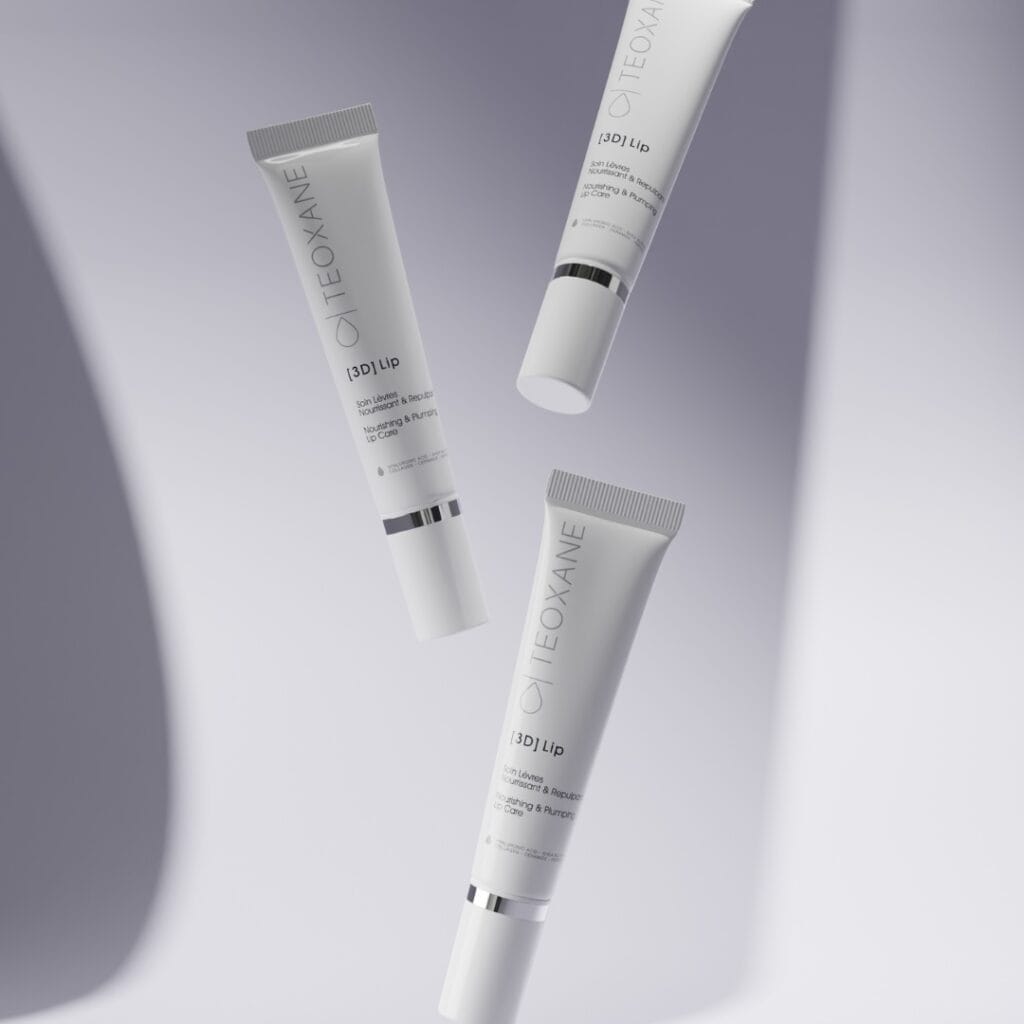Fashion isn’t just about clothing—it’s a reflection of our emotions, identities, and the cultural moment we’re living in. This summer, one timeless silhouette is making a powerful return, not just for its style but for the deeper psychological comfort it provides: the babydoll dress.
Once dismissed as a relic of the past, the babydoll dress is now a symbol of emotional comfort, nostalgia, and rebellion. From Gen Z’s embrace of childlike silhouettes to the deeper meaning behind softness in fashion, experts say this trend is tapping into something much bigger than style.
The Psychology Behind the Babydoll Revival
Fashion Psychologist Jennifer Heinen explains that clothing serves as a coping mechanism in uncertain times. “Fashion creates structure in a world that often feels chaotic,” she says. “Soft fabrics, uncomplicated silhouettes, and tactile comfort help regulate our emotional state before distress escalates.”
In moments of psychological overload, what we wear becomes part of our self-soothing rituals. The babydoll dress, with its loose fit and airy movement, offers a sense of safety and simplicity—a way to feel held, grounded, and emotionally secure.


Gen Z’s Rebellion Through Softness
Gen Z is coming of age in a world that feels emotionally unlivable. Economic instability, climate anxiety, and social pressures have led them to embrace childlike silhouettes as a form of protest.
“Rather than regressing, they’re reframing vulnerability as power,” Heinen explains. “Dressing in ‘non-serious’ clothes in serious times becomes a quiet act of defiance.”
Babydolls, puff sleeves, and Peter Pan collars allow Gen Z to reclaim softness without sacrificing individuality. It’s a rejection of rigid societal expectations and an embrace of fluid, expressive femininity.
The Babydoll Dress and Modern Femininity
The babydoll dress has evolved from a tool of containment into a canvas of liberation. In 2025, it represents a version of femininity that is deliberately unstructured—it refuses to conform, cinch, or shrink. Instead, it expands.
“Modern femininity is no longer built solely for the gaze,” Heinen says. “It’s about emotional congruence—dressing in alignment with how we feel and who we are becoming.”
The resurgence of the babydoll dress in the Spring/Summer 2025 collections is more than just a nostalgic revival—it’s a reflection of the evolving relationship between fashion and emotional well-being. As someone who has spent years analyzing trends and educating future designers, I see this movement as a deliberate shift toward softness, comfort, and psychological ease. The babydoll dress, once associated with youthful innocence, is now being reinterpreted as a symbol of empowerment, allowing wearers to embrace fluidity and reject rigid societal expectations.
What makes this trend particularly compelling is its intersection with modern femininity. Designers are no longer treating softness as a weakness but rather as a form of quiet rebellion. The loose, airy silhouettes of babydoll dresses challenge traditional notions of structure and control, offering a sense of freedom that resonates deeply in today’s social climate. This is a departure from past decades, where femininity was often defined by restrictive tailoring and exaggerated hourglass shapes. Instead, the babydoll dress allows for movement, playfulness, and self-expression without compromise.

Float through summer in effortless elegance with Chloé’s high-low ruffled dress, a stunning blend of silk habotai and lace in a dreamy Limpid Green hue. Designed for movement and grace, this ethereal piece captures the essence of modern femininity. Available now at Chloé Boutiques in Soho, Madison, and Melrose—or shop online at www.chloe.com
From a fashion educator’s perspective, this trend also speaks to the growing demand for emotionally intelligent design. The industry is shifting away from purely aesthetic-driven collections and moving toward garments that provide psychological comfort. The babydoll dress, with its soft fabrics and unstructured form, is a prime example of how fashion can serve as a coping mechanism in uncertain times. It’s fascinating to see how designers are incorporating elements of nostalgia while modernizing the silhouette to align with contemporary values.

Several designers have embraced this trend in their SS25 collections, each offering a unique take on the babydoll dress. Loewe, Chloé, Emilia Wickstead, Cecilie Bahnsen, and Alberta Ferretti have all showcased variations of this silhouette, proving that softness and structure can coexist. Whether through delicate embroidery, voluminous layers, or minimalist interpretations, these designers are redefining the babydoll dress for a new era. It’s a trend that speaks to both the past and the future, making it one of the most intriguing developments in contemporary fashion.
This shift reflects a broader movement toward comfort-driven fashion, where emotional ease is the new status symbol. People are no longer dressing to prove something—they’re dressing to feel something.
The Future of Fashion Psychology
The resurgence of the babydoll dress signals a growing desire for emotionally intelligent fashion—clothes that offer more than aesthetic value, but emotional resonance.
“As we continue to move through collective uncertainty, consumers will prioritize garments that feel regulating, affirming, and expansive,” Heinen predicts.
This trend may usher in a design future where softness is seen not as fragility, but as power. Where fashion is created not just for the eye, but for the nervous system.
The babydoll dress isn’t just a fleeting trend—it’s a cultural shift. It’s a reminder that fashion is more than what we wear—it’s how we feel, cope, and express ourselves in an unpredictable world.
Fashion is more than fabric—it’s psychology, identity, and emotional architecture. In an exclusive interview with StyleLujo.com, Fashion Psychologist Jennifer Heinen provides insight into the emotional forces shaping style today. From Gen Z’s embrace of childlike silhouettes to the deeper meaning behind the resurgence of the babydoll dress, Heinen explores how fashion functions as a coping mechanism, a rebellion, and a powerful tool for self-expression. Below, I pos a handful of thought-provoking questions, while Jennifer Heinen offers expert analysis on the psychology behind our sartorial choices.
Joseph DeAcetis: The babydoll dress is making a comeback—what does this say about modern femininity in today’s social climate?
Jennifer Heinen: The babydoll dress has evolved from a tool of containment into a canvas of liberation. In 2025, it represents a version of femininity that is deliberately unstructured. It refuses to conform, cinch, or shrink. Instead, it expands.
Modern femininity is no longer built solely for the gaze. It is about emotional congruence—dressing in alignment with how we feel and who we are becoming. The babydoll silhouette embodies power, play, and permission, all at once. It reflects a new kind of feminine strength: one that chooses fluidity over formality.
Joseph DeAcetis: How does nostalgia play a role in fashion psychology, particularly in times of uncertainty?
Jennifer Heinen: Nostalgia functions as a psychological anchor. When the present feels unstable, we reach back to emotional touchpoints—periods in our lives (or collective memory) when things felt safe, simple, or whole. This is known in psychology as affective memory, and it often begins with sensory triggers: the texture of a dress, the silhouette of a childhood outfit.
When fashion channels nostalgia, it’s not just referencing the past—it’s recreating the emotional memory of it. It gives us the illusion of control through familiarity. That’s why styles that echo the past feel so emotionally charged in the present.
Joseph DeAcetis: What emotional connections do people form with soft, flowy, and traditionally youthful styles like the babydoll dress?
Jennifer Heinen: Soft, flowing, youthful styles often mirror the emotional landscapes we long to revisit: imagination, care, joy, freedom. These silhouettes can reactivate early sensory memories from a time when joy was permissionless and the body wasn’t yet burdened by scrutiny.
These garments become containers for affective recall—drawing us back to emotional states we may no longer experience daily but still carry within us. Putting on a babydoll dress isn’t just getting dressed. It’s a return.
Joseph DeAcetis: Are there historical parallels to today’s embrace of childlike fashion elements?
Jennifer Heinen: Yes. Fashion has long responded to crisis with softness. After both World Wars, we saw a return to hyper-feminine silhouettes, florals, and soothing colors—visual responses to collective trauma. In the 1960s, the rise of babydolls and mod minis offered a kind of joyful rebellion during political and social upheaval.
Today’s babydoll revival follows the same pattern: in times of instability, we reach for styles that soothe and subvert simultaneously. Softness becomes both shield and salve.
Joseph DeAcetis: What does the preference for looser, less structured garments reveal about societal attitudes towards femininity and self-expression?
Jennifer Heinen: It reflects a radical redefinition. Structure once symbolized propriety and control. But today, looseness signifies freedom. For many women and femmes—or anyone engaging with traditionally feminine aesthetics—these garments express a desire to move beyond containment.
It’s a shift away from aesthetic performance and toward internal validation. Clothing becomes less about how we’re perceived, and more about how we feel. Expression, not compression.
Joseph DeAcetis: How does clothing function as a psychological coping mechanism, particularly in uncertain times?
Jennifer Heinen: Clothing offers micro-control in moments of macro-uncertainty. The act of selecting an outfit becomes a ritual of stability—a way to create emotional order when the external world is unpredictable.
Color, texture, fit: these choices regulate our sensory and psychological environments. It’s emotional architecture. We build ourselves from the outside in.
Joseph DeAcetis: Do you see this trend as part of a larger movement toward comfort-driven fashion?
Jennifer Heinen: Absolutely. We’re moving into an era where emotional comfort is the new status symbol. People are no longer dressing to prove something; they’re dressing to feel something. The babydoll is part of a broader cultural shift: from performance to presence.
Comfort-driven fashion isn’t about laziness. It’s about reclaiming ease as something intelligent, even luxurious.
Joseph DeAcetis: In what ways might the resurgence of the babydoll dress influence future trends in fashion psychology?
Jennifer Heinen: The babydoll signals a growing desire for emotionally intelligent fashion—clothes that offer more than aesthetic value, but emotional resonance. As we continue to move through collective uncertainty, consumers will prioritize garments that feel regulating, affirming, and expansive.
This trend may usher in a design future where softness is seen not as fragility, but as power. Where we design not just for the eye, but for the nervous system. Fashion, then, becomes not just style—but healing.
Fashion isn’t just about clothing—it’s a reflection of our emotions, identities, and the cultural moment we’re living in. This summer, one timeless silhouette is making a powerful return, not just for its style but for the deeper psychological comfort it provides: the babydoll dress.
Once dismissed as a relic of the past, the babydoll dress is now a symbol of emotional comfort, nostalgia, and rebellion. From Gen Z’s embrace of childlike silhouettes to the deeper meaning behind softness in fashion, experts say this trend is tapping into something much bigger than style.
Save Article








